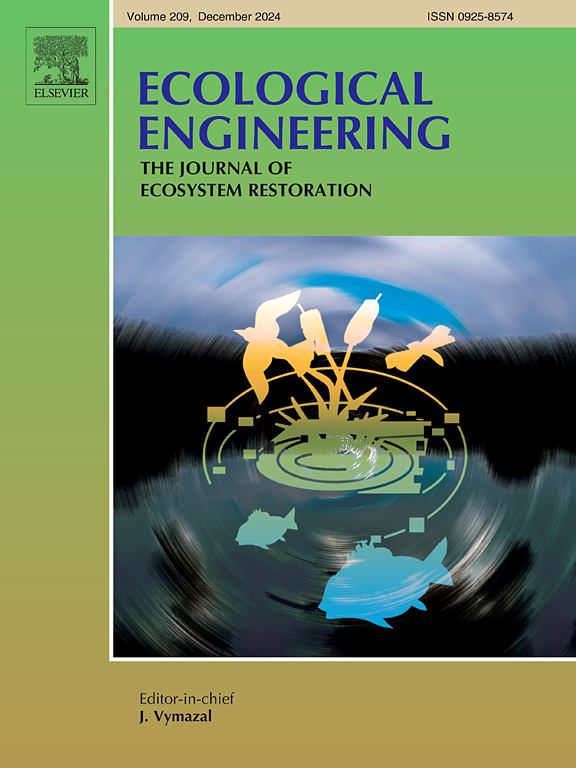The tungsten tailings remediation by soilless plant establishment: Varied aggregation structure, heavy metal mobilization, and microbial community structure
IF 3.9
2区 环境科学与生态学
Q1 ECOLOGY
引用次数: 0
Abstract
Soilless plant establishment is an effective approach for tailings reclamation, where plant rhizosphere interactions induce physical, chemical, and biological transformations in tailings, thus promoting functional soil formation. This study conducted a 120-day pot plant experiment and investigated the basic properties, nutrients, aggregate structure, heavy metals (HMs), and microbial community structure variation in tungsten tailings after soilless plant establishment. Results showed that soilless plant establishment depleted limited nutrients (available nitrogen and available phosphorus) but ameliorated the basic properties of tailings (reduced pH and electrical conductivity, increased organic matter, and available potassium). After plants growth, tailings particles were aggregated, the macroaggregates fraction increased to 25–43 % compared to the control group, and the mean weight diameter in plant-treated tailings ranged from 376 to 521 μm, which was an average of 2.7 times that of the control group. After planting, the dominant bacteria shifted from Actinobacteria to Proteobacteria. Compared with the control group, the relative abundance of Proteobacteria and Cyanobacteria increased from 26 % and 0.1 % to 28 % and 2 %, respectively. Furthermore, soilless plant establishment effectively reduced the total Cd (0.7–4.6 mg/kg), Pb (4.8–78.4 mg/kg), and W (7.0–95.7 mg/kg) content in tailings, particularly activating stable HMs fractions and facilitating their removal from tailings through plant uptake. Festuca elata and Brassica napus are recommended as potential pioneer plants attributed to adaptability in tailings and ability to uptake HMs, respectively. This study systematically elucidates the soil-formation process in tungsten tailings and discusses the fate of HMs, offering an effective method for ecological restoration of tailings with high HMs levels.
求助全文
约1分钟内获得全文
求助全文
来源期刊

Ecological Engineering
环境科学-工程:环境
CiteScore
8.00
自引率
5.30%
发文量
293
审稿时长
57 days
期刊介绍:
Ecological engineering has been defined as the design of ecosystems for the mutual benefit of humans and nature. The journal is meant for ecologists who, because of their research interests or occupation, are involved in designing, monitoring, or restoring ecosystems, and can serve as a bridge between ecologists and engineers.
Specific topics covered in the journal include: habitat reconstruction; ecotechnology; synthetic ecology; bioengineering; restoration ecology; ecology conservation; ecosystem rehabilitation; stream and river restoration; reclamation ecology; non-renewable resource conservation. Descriptions of specific applications of ecological engineering are acceptable only when situated within context of adding novelty to current research and emphasizing ecosystem restoration. We do not accept purely descriptive reports on ecosystem structures (such as vegetation surveys), purely physical assessment of materials that can be used for ecological restoration, small-model studies carried out in the laboratory or greenhouse with artificial (waste)water or crop studies, or case studies on conventional wastewater treatment and eutrophication that do not offer an ecosystem restoration approach within the paper.
 求助内容:
求助内容: 应助结果提醒方式:
应助结果提醒方式:


